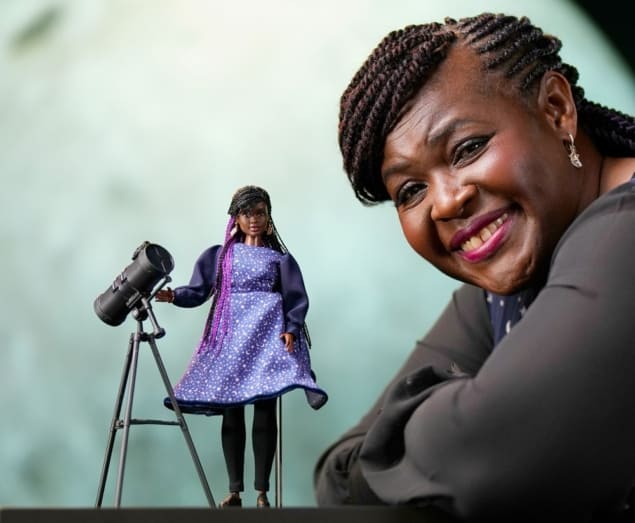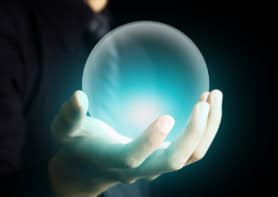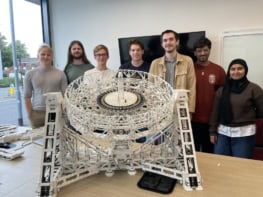
To mark International Women’s Day on Wednesday, Barbie created “one-of-a-kind role model dolls” to honour seven female leaders in science, technology, engineering and medicine. They include Susan Wojcicki, chief executive of YouTube, German microbiologist Antje Boetius from the Max Planck Institute for Marine Microbiology as well as the UK space scientist and science educator Maggie Aderin-Pocock.
The Barbie doll inspired by Aderin-Pocock, which won’t be on general sale, has a starry dress reminiscent of the night sky and comes with a telescope accessory for stargazing.
Aderin-Pocock, who has just become University of Leicester’s new chancellor, says that when she heard the news of a Barbie in her honour she “danced around the living room” with her daughter.
“When I was little, Barbie didn’t look like me, so to have one created in my likeness is mind-boggling,” says Aderin-Pocock. “It’s such an honour to receive this doll that is celebrating my achievements.”
Slam dunk
This week the American Physical Society held its March meeting in Las Vegas and one intriguing talk was given by PhD student Boris Barron from Cornell University.
He described using density functional theory – originally developed to study the behaviour of large collections of electrons – to suggest the best positioning for each player on the basketball court if they want to raise their probability of either scoring or defending successfully.
Barron used data of player positions from this season’s NBA games to develop his model and was able to predict where a particular player may go next as well as determine the players that were in good or bad positions.
And finally, researchers in the US have come up with a device that can convert a smartphone or tablet into a fluorescence microscope for under $50. The authors suggest that the device – which they have named a glowscope – could be used to image cells, tissues, and organisms under low magnification and is perfect for schools, scientific outreach and even in research labs.
The authors say the glowscope can be used, for example, to image live zebrafish embryos – which are between two and three millimetres long – adding that it can measure the heart rates of the embryos and even the movements of individual heart chambers.



